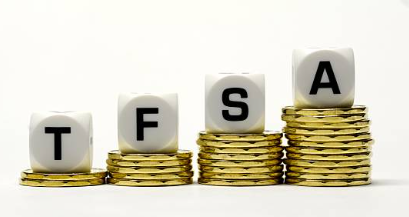
Whether you’re a novice investor or a seasoned financial enthusiast, this article is designed to be your go-to resource, providing you with a detailed and user-friendly FAQ blog guide that explores the ins and outs of Tax-Free Savings Accounts.
We will navigate through the intricacies of TFSA accounts, demystifying their key aspects and shedding light on their immense benefits. From understanding contribution limits to exploring investment options, we’ll equip you with the knowledge and insights needed to make informed financial decisions.
What is a Tax-Free Savings Account (TFSA)?
A TFSA is a government-regulated savings and investment account that allows Canadian residents to grow their savings without paying taxes on the investment income earned. It offers individuals a tax-free way to save money for various financial goals, such as buying a home, saving for retirement, or funding a dream vacation.
Annual Contribution Limits and Lifetime Limit
The government sets the annual contribution limit for Tax-Free Savings Accounts. As of 2023, the annual contribution limit is $6,000. However, it’s important to note that TFSA contribution room accumulates over time. If you haven’t maximized your contributions in previous years, you can carry forward the unused contribution room. This feature allows you to make larger contributions in a given year if you have available unused room from previous years.
In addition to the annual contribution limit, there is also a lifetime limit for TFSA contributions. The lifetime limit represents the maximum amount of money you can contribute to your TFSA since its introduction in 2009. As of 2023, the lifetime limit is $88,500. Keeping track of your contributions is crucial to ensure you stay within the lifetime limit.
Types of Investments Allowed in Tax-Free Savings (TFSA)
TFSA accounts offer a wide range of investment options to suit different risk tolerances and goals. You can invest in various asset classes, including:
- cash
- mutual funds
- securities listed on a designated stock exchange
- guaranteed investment certificates
- bonds
- certain shares of small business corporations
By diversifying your portfolio and considering your investment objectives, you can make informed decisions about the investments within your TFSA.
Visit the CRA website for more details at: https://www.canada.ca/en/revenue-agency/services/tax/individuals/topics/tax-free-savings-account/types-investments.html
If you are new to investing and would like to learn more visit our blog “Beginner’s Guide to Investing”: https://www.wealthsolutionshub.com/everything-finance/beginner-investing-guide-canada/
Tax Benefits of Tax-Free Savings Accounts (TFSA)
TFSA accounts provide attractive tax benefits, including the ability to hold non-Canadian stocks while still enjoying tax-free growth. Here’s a more comprehensive explanation of the tax benefits of TFSA accounts, including scenarios involving non-Canadian stocks:
- Tax-Free Growth: One of the primary advantages of TFSA accounts is that the income earned within the account, such as capital gains and dividends, is entirely tax-free. This applies not only to Canadian stocks but also to non-Canadian stocks held within the TFSA. Regardless of the country of origin, any growth or income generated by non-Canadian stocks in your TFSA is shielded from taxation.
- Tax-Free Withdrawals: Another significant advantage of TFSA accounts is that any withdrawals made from your account are also tax-free. This means that when you need to access your savings or investment returns, you won’t have to pay taxes on the amount withdrawn. Whether you’re using the funds for short-term expenses, major purchases, or even retirement income, you can withdraw the money without worrying about additional tax burdens.
- Flexibility in Contribution and Withdrawal: TFSA accounts provide flexibility in both contributing to and withdrawing from the account. Unlike retirement-focused accounts like RRSPs, there are no restrictions on the purpose of your withdrawals. Whether you need the funds for a down payment on a house, education expenses, emergency situations, or any other financial need, you have the freedom to access your TFSA funds without tax consequences.
- No Impact on Government Benefits: The tax-free nature of TFSA accounts ensures that any income or withdrawals from the account won’t affect your eligibility for government benefits or credits. Since the funds within a TFSA are not considered taxable income, they are not factored into income calculations for means-tested benefits such as the Canada Child Benefit (CCB) or the Goods and Services Tax (GST) credit.
- No Contribution Deadlines: Unlike Registered Retirement Savings Plans (RRSPs), which have annual contribution deadlines, TFSA accounts do not have such limitations. You can contribute to your TFSA at any time throughout the year, allowing you to take advantage of investment opportunities whenever they arise. This flexibility gives you the freedom to maximize your contributions based on your financial situation and goals.
- Recontributing Withdrawn Amounts: If you make withdrawals from your TFSA, the amount withdrawn is added back to your contribution room. For example, if you contribute $6,000 in a year and later withdraw $3,000, you can recontribute the $3,000 in addition to the following year’s annual limit. This recontribution does not impact your contribution room for the current year, allowing you to continue maximizing your contributions.
Monitoring your TFSA contribution room is crucial to ensure you make the most of the tax benefits offered. By staying within the annual and lifetime limits, utilizing unused contribution room, and understanding the flexibility of re contributing withdrawn amounts, you can effectively manage your TFSA contributions and maximize your tax-free savings over time.
TFSA vs. RRSP: Understanding the Differences
TFSA accounts and Registered Retirement Savings Plans (RRSPs) are two distinct investment vehicles in Canada, each with its own set of rules, benefits, and tax implications. To fully understand the differences between TFSA accounts and RRSPs, let’s explore them in more comprehensive detail:
- Contributions: TFSA contributions are made with after-tax dollars, meaning you’ve already paid income tax on the money before depositing it into your TFSA. On the other hand, RRSP contributions are tax-deductible, which means they are deducted from your taxable income for the year, potentially reducing your overall tax liability. However, keep in mind that you will have to pay taxes on the amount withdrawn from your RRSP in the future.
- Taxation: TFSA withdrawals are entirely tax-free. Whether you withdraw your initial contributions or any investment gains, you won’t owe any taxes on the amount withdrawn. This feature makes TFSA accounts flexible for various financial goals, including short-term savings, emergencies, or major purchases. In contrast, RRSP withdrawals are subject to taxation. When you withdraw funds from your RRSP, the amount is treated as taxable income in the year of withdrawal. This can impact your overall tax liability, especially if you’re withdrawing a substantial amount during retirement.
- Contribution Room: TFSA contribution room accumulates every year, regardless of your earned income. The annual contribution limit is set by the government and as of 2023, it is $6,000 per year. If you don’t use your full contribution room in a given year, the unused portion carries forward indefinitely. This means you can accumulate unused contribution room over time and make larger contributions in the future. On the other hand, RRSP contribution room is based on your earned income. The maximum contribution limit is a percentage of your earned income, up to a certain annual limit. Unused RRSP contribution room also carries forward but has limitations based on your income and pension adjustments.
- Retirement Focus: While both TFSA accounts and RRSPs can be used for retirement savings, they have different focuses. TFSA accounts provide more flexibility in how funds are used. You can withdraw money at any time without tax consequences, allowing you to use the funds for various financial goals. RRSPs, on the other hand, are primarily designed for retirement savings. The government encourages long-term retirement planning by imposing penalties for early withdrawals from RRSPs, except for specific circumstances such as the Home Buyers’ Plan (HBP) or Lifelong Learning Plan (LLP).
Understanding these differences is crucial when choosing the right investment vehicle for your needs. TFSA accounts are advantageous for short-term savings, tax-free growth, and flexibility in accessing funds. RRSPs, on the other hand, offer tax deductions on contributions, long-term retirement savings, and potential tax deferral until retirement. It’s recommended to consult a financial advisor or tax professional to determine the most suitable option based on your financial goals, current income, and tax situation.
Tips for Maximizing Your TFSA Returns
To make the most of your TFSA and maximize your returns, consider the following tips:
- Start contributing to your TFSA as early as possible to take advantage of compound growth.
- Regularly contribute to your TFSA to utilize the full annual contribution limit.
- Choose investments that align with your risk tolerance and long-term financial goals.
- Rebalance your TFSA portfolio periodically to ensure it remains diversified and aligned with your objectives.
- Explore various investment options available within your TFSA to diversify your holdings.
By following these tips, you can optimize your TFSA returns and work towards achieving your financial aspirations.
Conclusion
In conclusion, TFSA accounts provide Canadians with a flexible and tax-efficient way to save and invest. By understanding the eligibility requirements, contribution limits, tax benefits, and investment options, you can make informed decisions to maximize the potential of your TFSA. Remember to consider your financial goals, risk tolerance, and long-term strategies to make the most of this valuable investment tool.
- What is the maximum contribution limit for TFSA accounts?
The maximum contribution limit for TFSA accounts is determined by the government and is subject to change annually. As of 2023, the maximum contribution limit is $6,000. It’s important to stay updated with any changes to ensure you contribute within the allowable limits.
- Can I open multiple TFSA accounts?
Yes, you can open multiple TFSA accounts; however, it’s essential to note that the contribution limit applies to the total sum of all your TFSA accounts. Make sure that the combined contributions across all accounts do not exceed your annual contribution limit. Having multiple accounts can provide flexibility in managing your investments and savings goals.
- Are there penalties for overcontributing to a TFSA?
Yes, overcontributions to a TFSA are subject to penalties. If you exceed your contribution limit, you will be charged a penalty tax of 1% per month on the excess amount. It’s crucial to track your contributions carefully to avoid overcontributing and incurring these penalties.
- Can I hold foreign currencies in my TFSA?
Yes, you can hold foreign currencies, including US dollars, in your TFSA. This allows you to diversify your investments and take advantage of opportunities in international markets. However, it’s important to note that currency fluctuations can impact the value of your holdings.
- Can I contribute to my spouse’s TFSA account?
No, you cannot directly contribute to your spouse’s TFSA account. Each individual has their own contribution room based on their eligibility. However, you can gift funds to your spouse, and if they have available contribution room, they can contribute those funds to their own TFSA. This can be a strategy to maximize tax-free savings for couples.
Remember, it’s always advisable to consult with a financial advisor or tax professional to ensure you fully understand the rules and regulations surrounding TFSA accounts and make informed decisions based on your individual financial circumstances.
Additional Resources
Wealth Solutions Hub: Visit our comprehensive blog that offers valuable insights and strategies for maximizing your TFSA account.
Government of Canada – Tax-Free Savings Account (TFSA): The official website of the Government of Canada provides detailed information about TFSA rules, contribution limits, withdrawals, and eligible investments.
The Globe and Mail – TFSA Limit Calculator: The Globe and Mail offers a handy TFSA limit calculator that helps you determine your TFSA contribution room based on your age, previous contributions, and withdrawals.





